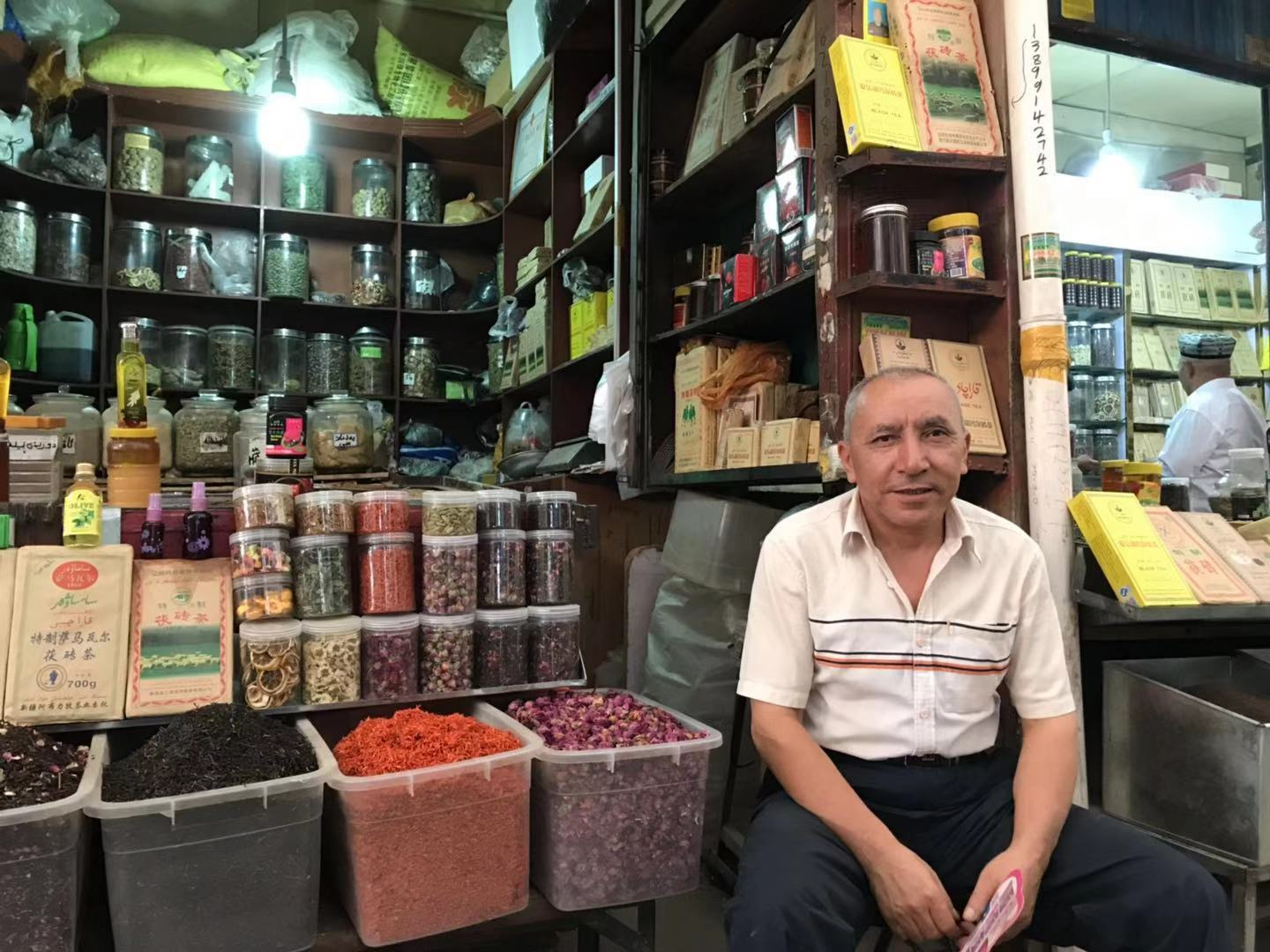

It was almost noon during the summer time, sultry and sandy as the wind from the Taklamakan blew over the oasis of Kashgar – the westernmost city of China.
Abdurehim and his younger brother are tending to their parents' stall which sells bedding, a daily routine during their summer break from elementary school. The booth, which sits in one of the many corners in the Grand Bazaar of Kashgar, is the only source of income for their family.
"Our parents spend all day toiling away on restocking, selling and operating an online shop," Abdurehim told me.
The region's high cotton output, accounting for over 83 percent of the country's total last year, coupled with lower costs gives their business an exceptional advantage over their counterparts in other regions.
On average, his family can earn up to 800 yuan (around 113.6 U.S. dollars) a day, said Abdurehim, with most of it coming from their online shop. In the era of e-commerce, his family's traditional shop is leveraging this convenience to sell well-made cotton products at low prices to inland customers.

Abdurehim and his younger brother at their family's stall in the Grand Bazaar of Kashgar in northwest China's Xinjiang Uygur Autonomous Region, July 27, 2019. /CGTN Photo
The Grand Bazaar is known as one of the largest and busiest international trade markets in Central Asia. Located in Kashgar's northeastern corner along the Tumen River, the bazaar is composed of a maze of shops and stalls numbering around 5,000. The entire market is divided into 21 specialty sections, which combined take up over 250 mu (about 0.17 square kilometers).
Of course, more than bedding is sold there. Beautiful handwoven rugs reminiscent of their Persian or Afghan counterparts, painted earthen pots, silk scarves with delicate embroidery, piles of flowery hats, delicate Uygur musical instruments, and an assortment of spices, tea leaves, dried fruits and nuts added color to the hustle and bustle of the sandy oasis.

Maeminjan sells teas and spices at his stall in the Grand Bazaar of Kashgar in northwest China's Xinjiang Uygur Autonomous Region, July 27, 2019. /CGTN Photo
I came upon the seated Maeminjan as he leisurely talked to another man in the stall across from him. Bags upon bags of spices, powders and tea leaves lined Maeminjan's little shop. He told me that his herbal teas were good for digestion and even handed me a small jar filled with petals for rose tea. He gave me a business card before I left and told me to call him if I needed anything because many inland customers get their teas from him.
After wandering through the market for an hour, it was apparent that domestic customers didn't only come there to buy souvenirs. Food companies from more economically developed regions, such as Shanghai, Guangdong and Henan, would order batches of nuts or dried fruits from Turghunjan's stall.
"Even visitors from other countries such as the U.S. or Canada would come to buy nuts in bulk," he said while handing me some Iranian nuts I'd never seen before. Among the nearly 20 varieties of nuts and dried fruits, three were imported from Iran.

Locals wait for food in front of a stall in the Grand Bazaar of Kashgar in northwest China's Xinjiang Uygur Autonomous region, July 27, 2019. /CGTN Photo
That was my last day in Kashgar. I could get a sense of the bustling commerce that made this city one of the greatest trade hubs in ancient times. From the second century BC to the 15th century AD, Kashgar was a crucial stop for merchants and their caravans along the Silk Road. The oasis town where the Taklamakan Desert meets the Tianshan Mountains was ideal for both rest and business.
This commercial activity encouraged locals to open up markets and trade with the itinerant merchants, who unloaded silks, spices and even coveted gemstones from modern-day Europe and the Middle East. The famed Marco Polo had reportedly passed through in the 13th century, remarking on Kashgar's importance as a trading hub in Central Asia.
Kashgar today feels like it's a place out of time, continuing with centuries of tradition. Modernity is also pervading the region, not just with consumer goods such as iPhones, but through tech that has connected this isolated region to the outside world. The Silk Road of today is no longer just a system of roads and sandy trails, but a digital network that sees locals trading with customers within China, throughout Central Asia and beyond.
This is the 10th story in our series, "A rare look into southern Xinjiang." You can find the other articles documenting our seven-day tour throughout the region here: 1, 2, 3, 4, 5, 6, 7, 8, 9.

Copyright © 2018 CGTN. Beijing ICP prepared NO.16065310-3
Copyright © 2018 CGTN. Beijing ICP prepared NO.16065310-3